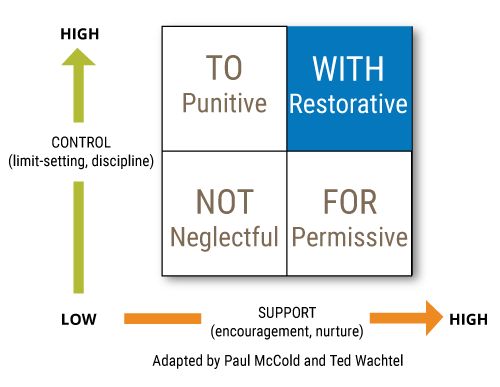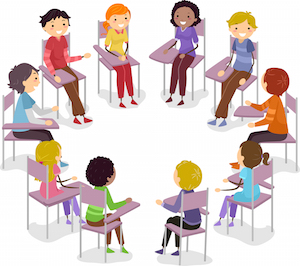"Students and teachers work best in an environment in which they feel safe, supported and accepted. In addition, environments that have strong school climates foster the social, emotional, and academic well-being of all students. A healthy community with strong relationships is a conditio sine qua non for schools that want to tackle today’s and tomorrow’s challenges in an innovative and sustainable way. The use of restorative approaches is supportive to that process. By consistently giving people more voice, more choice and more responsibility, restorative approaches can realize a shift in the culture of an organization. There has been growing evidence of various positive outcomes emerging from restorative programs in schools such as reduced rates of exclusions, reduced incidents of bullying, improved learning outcomes etc.. But to be effective, restorative approaches must be in place across the entire school and till now however restorative practices have only been introduced fragmentarily in schools in Europe." (source: Ligand https://www.ligand.be/)
Restorative practices is a social science that studies how to build social capital and achieve social discipline through participatory learning and decision making.
The use of restorative practices helps to:
- reduce crime, violence and bullying
- improve human behavior
- strengthen civil society
- provide effective leadership
- restore relationships
- repair harm
(source: IIRP https://www.iirp.edu/defining-restorative)
Some concepts used in St.-Paulus Kortrijk;
Social Discipline Window, the 4 restorative questions, proactive circles, ten animal characters from the axenroos, ...
 |
 |
||
 |
 |
"Building our community" example
